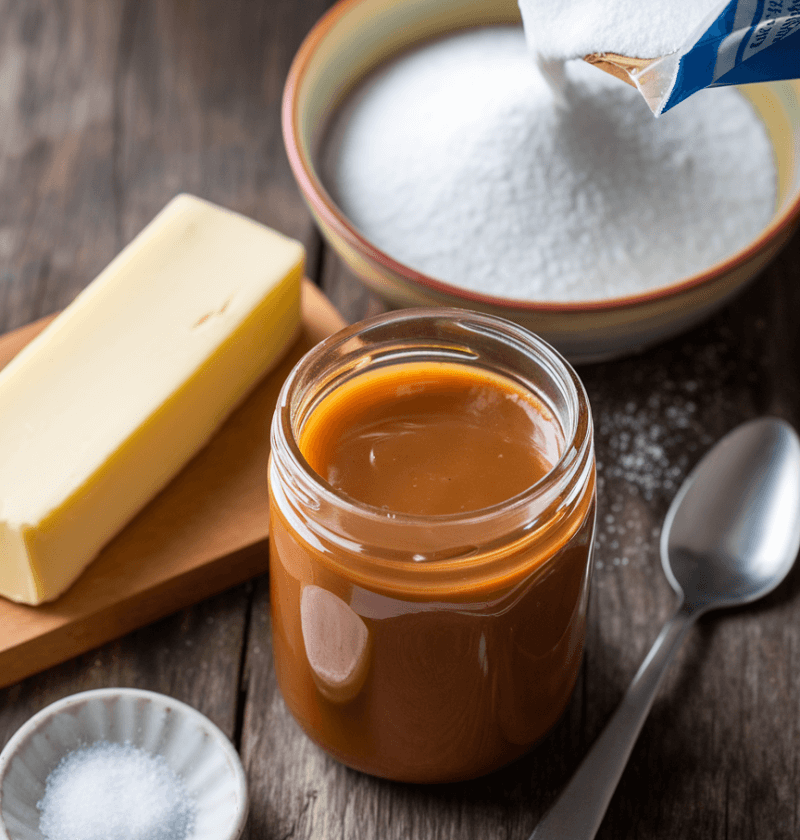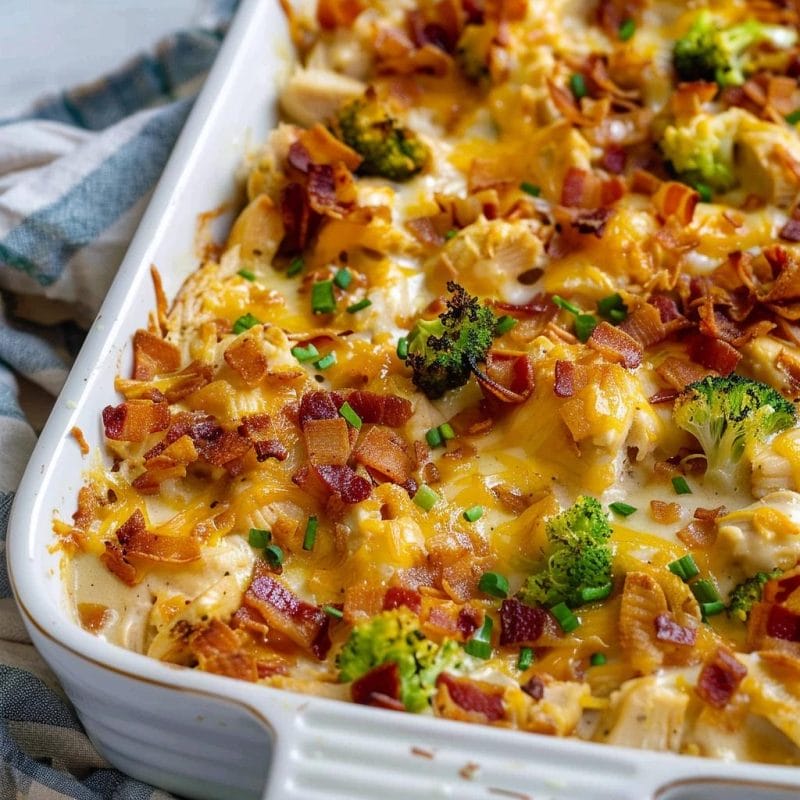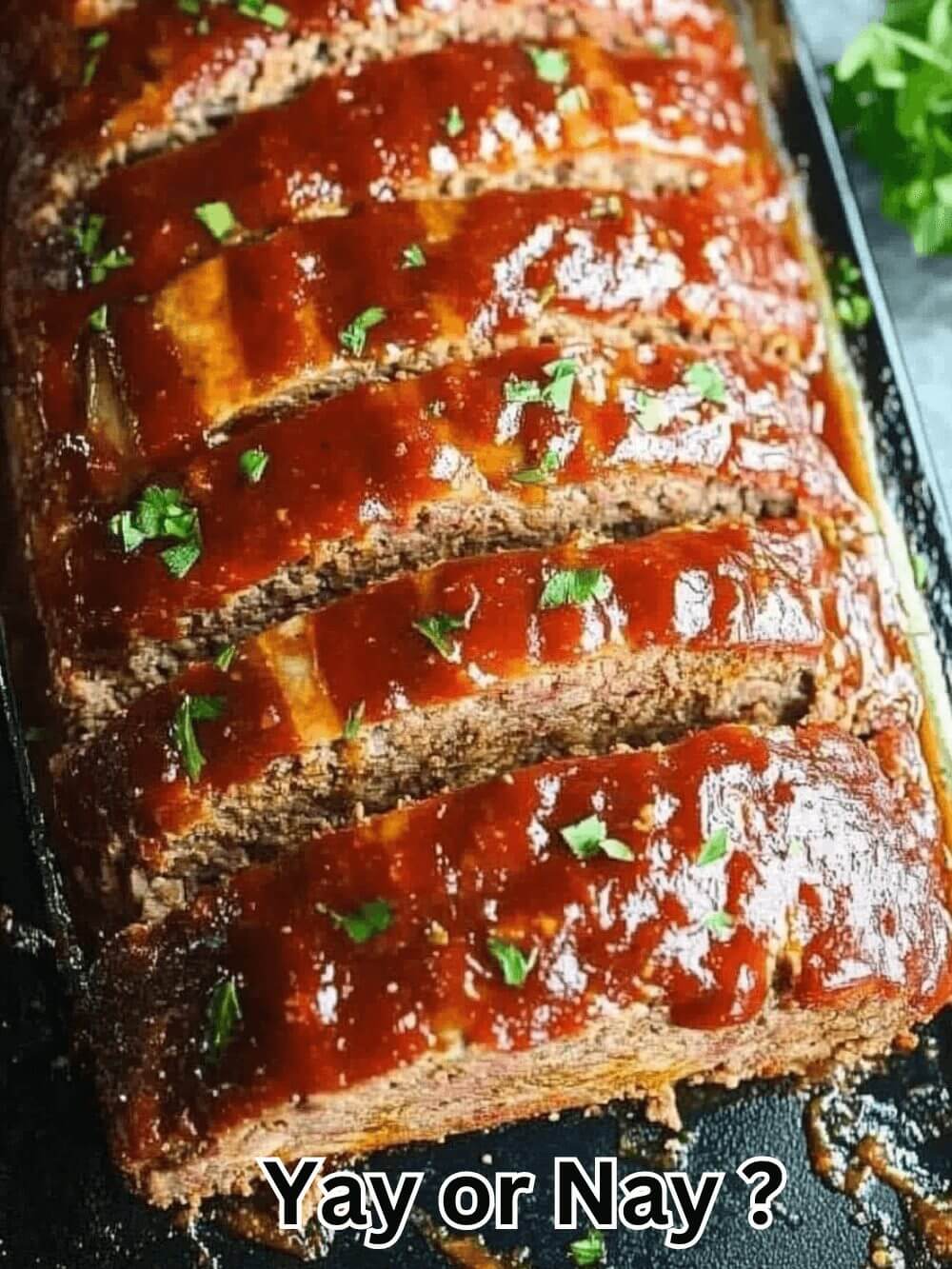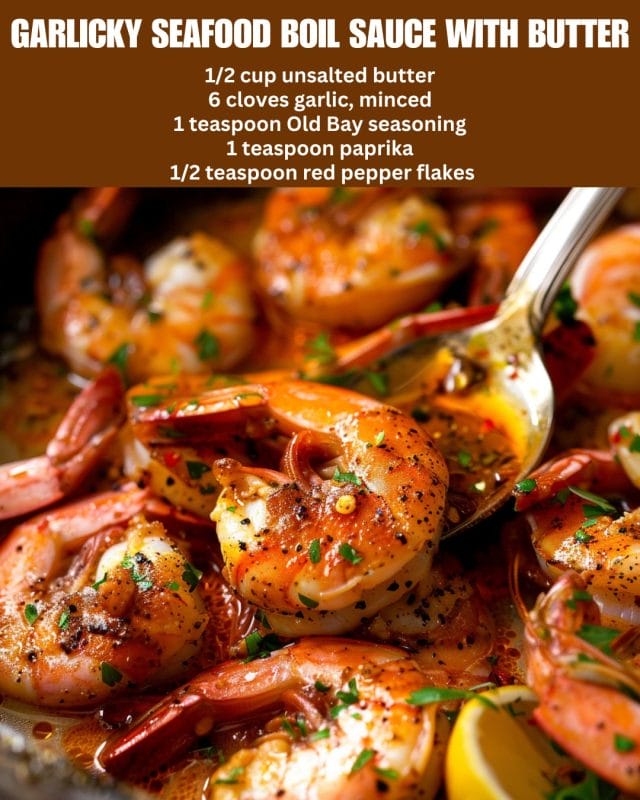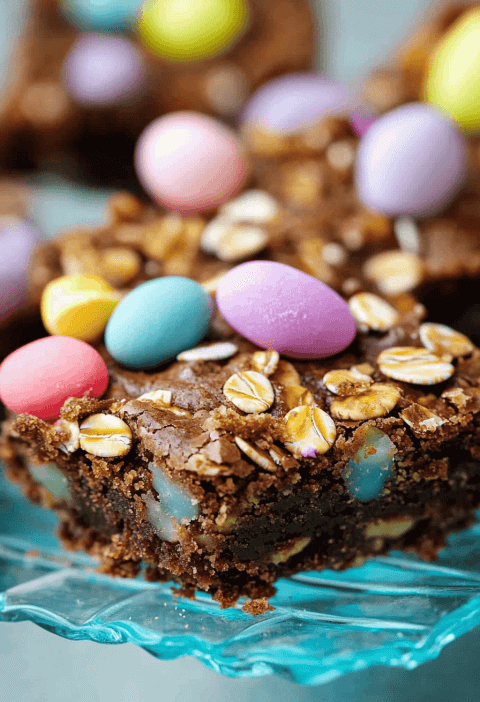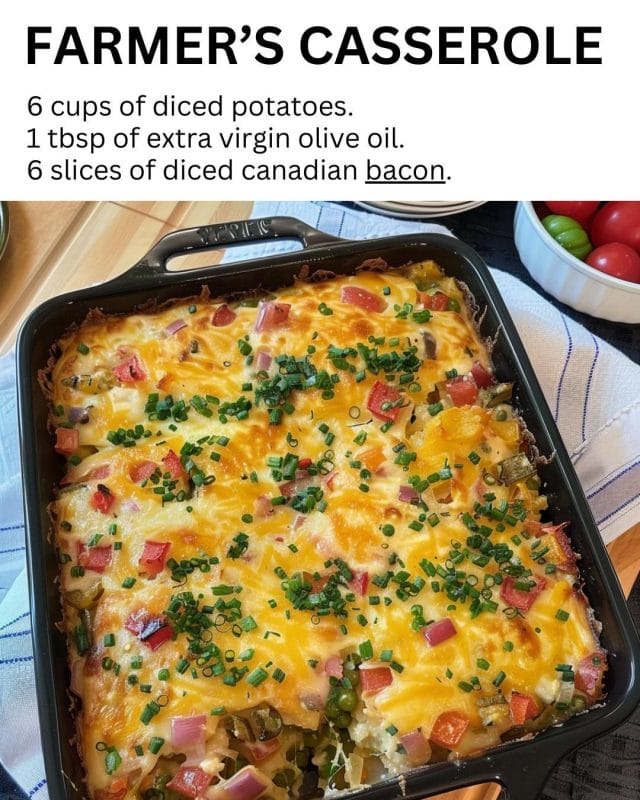Would you like to save this?
I’ve been known to lick the spoon when this homemade salted caramel frosting hits its silky-smooth stage. Trust me, this sweet topping is the secret weapon that turns any dessert into a crowd-pleasing phenomenon—who wouldn’t want that?
Now, before your whisk even lifts, let me share why this homemade salted caramel frosting will fast become your go-to for everything from cupcakes to layer cakes.
Why You’ll Love This Salted Caramel Frosting
- Silky, smooth texture—no grit, just creamy bliss
- Perfect sweet-salty balance that delights every time
- Ready in under 20 minutes—ideal for last-minute dessert cravings
- Uses pantry staples—no fancy or hard-to-find ingredients required
- Make-ahead friendly—chill and pipe whenever you’re ready
- Versatile topping—dreamy on cakes, cupcakes, brownies, and ice cream
- Customizable—add bourbon or espresso for a grown-up twist
- Impresses friends with minimal fuss and maximum flavor
Armed with these sweet-salty perks, you might be surprised how simple it is to whip this up, especially since most ingredients are already nestled in your pantry or baking cabinet.
Ingredients for Salted Caramel Frosting
- 1 cup granulated sugar
- 6 tablespoons unsalted butter, room temperature, cut into pieces (I love Kerrygold for its rich flavor)
- 1/2 cup heavy cream (warm, or full-fat coconut milk for dairy-free)
- 1 teaspoon vanilla extract (real vanilla adds depth)
- 1 teaspoon flaky sea salt, plus extra for sprinkling (I reach for Maldon)
- 3 cups powdered sugar, sifted
- 2 tablespoons milk or additional cream (adjust for desired consistency)
Got all your cups and spoons out? Fantastic—let’s transform these basics into that dreamy caramel frosting we’re all craving.
Directions for Salted Caramel Frosting
- In a medium, heavy-bottomed saucepan over medium heat, sprinkle the granulated sugar in an even layer. Don’t stir immediately; let the sugar melt and caramelize on its own—here’s the thing: you want a clear amber color before it starts to smoke. Swirl the pan gently every 30 seconds so it heats evenly, and grab a heat-resistant spatula to scrape any unmelted crystals on the sides.
- Once the sugar has turned a deep amber (about 5–6 minutes), add the butter pieces all at once, whisking vigorously. The mixture will foam up—keep whisking until the butter completely incorporates into the liquid, about 1 minute. If you notice any lumps, just lower the heat and continue stirring until smooth.
- Slowly pour the warm heavy cream into the bubbling caramel, whisking continuously to prevent separation. The mixture will bubble furiously, which is totally normal—just keep a steady hand and whisk until it slows down and you have a rich, creamy sauce. If you used coconut cream, you’ll notice a slightly thicker texture with a hint of tropical aroma.
- Remove the pan from heat and immediately stir in the vanilla extract and sea salt, tasting as you go to hit your preferred sweet-salty balance. Cool for about 5 minutes—any hotter and you risk clumping when adding powdered sugar. If your kitchen is on the chilly side, tipping the pan slightly helps the sauce cool uniformly.
- Transfer the slightly cooled caramel sauce into a large mixing bowl, then gradually sift in the powdered sugar, beating on low speed first so you don’t end up with a sugar cloud. Scrape down the sides as you go, then increase the speed to medium until the frosting looks smooth and glossy. Add in the extra cream or milk one tablespoon at a time if you want to thin it out.
- Continue beating on medium-high for another minute to introduce a bit of air—this gives you that pillow-soft mouthfeel. Check the consistency: for piping, aim for a thick ribbon that holds its shape, or add a splash more cream if you prefer a looser, spreadable frosting. Use a stand mixer whisk attachment or a handheld electric mixer, whichever you’ve got handy.
- Use the frosting immediately or chill it in the fridge for about 30 minutes for firmer peaks—just pull it out early and stir gently before piping or spreading. If you spot any crust forming on top, scrape it off before plating. Honestly, a too-warm frosting can slide right off a cake, so patience pays off.
You’ve just crafted a velvety caramel base; now let’s see how long it takes to pipe it onto your favorite dessert creations without losing that smooth texture.
Servings & Timing
- Yield: About 2 cups of frosting—enough for one 8-inch cake or roughly 12 cupcakes
- Prep Time: 10 minutes (measuring and warming cream)
- Cook Time: 10 minutes (caramelizing and mixing)
- Chill/Rest Time: Optional 30 minutes for firmer piping
- Total Time: 20 minutes active, up to 50 minutes if chilling
Looking beyond the standard recipe? These variations will let you mix and match flavors—from cozy spice blends to bold extracts—so every batch feels fresh and fun.
Variations
- Stir in 1 tablespoon of bourbon for a boozy caramel kick.
- Fold in 2 tablespoons of cocoa powder to create a mocha swirl.
- Swap heavy cream for full-fat coconut milk for a dairy-free version.
- Add a pinch of cinnamon and nutmeg for a cozy fall twist.
- Swirl in melted dark chocolate for an elegant, two-toned frosting.
Before you top your next sweet masterpiece, you’ll want tips on keeping that frosting as silky as the day you made it—read on for storage and reheating advice.
Storage & Reheating
- Store leftover frosting in an airtight container in the refrigerator for up to 1 week. For longer storage, freeze in a sealed bag for up to 3 months.
- To use chilled frosting, let it sit at room temperature for 15–20 minutes, then whisk or beat before spreading. Avoid microwaving, as it can alter the smooth, silky texture.
Even with perfect storage, little hiccups can happen; so if some frosting drama sneaks in, check out these frequently asked questions to set things right.
FAQs
- What makes this frosting different from regular buttercream?
This salted caramel frosting uses real caramel sauce instead of just butter and sugar, giving it a richer flavor and silkier texture. - Why is my caramel grainy?
If sugar crystals form prematurely, the caramel can grain; reheating gently and adding a touch of water or cream helps smooth it out. - Can I use brown sugar instead of granulated sugar?
Brown sugar will add molasses notes, but it may create a darker, softer caramel—great if you enjoy a deeper sweetness. - How do I know when the sugar has caramelized enough?
Look for a clear, amber hue before it darkens; using a candy thermometer (around 350°F/177°C) helps nail the timing. - Can I pipe this frosting?
Absolutely—chill for 30 minutes and whip briefly to firm up, then load into your piping bag for clean, defined designs. - Why is my frosting too thin?
If it’s runny, beat in more powdered sugar or chill it longer; kitchen temperature and measurement accuracy both affect consistency. - How do I prevent frosting from sliding off warm cakes?
Ensure cakes are fully cool, and consider a thin buttercream crumb coat to anchor the caramel frosting in place.
I hope these answers set you on the path to frosting success—now, a quick wrap-up.
Conclusion
This homemade salted caramel frosting is luscious, sweet, and perfectly balanced with sea salt for that unforgettable finish. It’s quick to make, versatile enough for all your favorite desserts, and sure to impress every time. Give it a whirl, leave your feedback below, and don’t forget to explore more of my dessert recipes for endless baking inspiration!

Salted Caramel Frosting
Ingredients
- 1 cup granulated sugar
- 6 tablespoons unsalted butter room temperature, cut into pieces
- 1/2 cup heavy cream warm (or coconut cream for dairy-free)
- 1 teaspoon vanilla extract
- 1 teaspoon sea salt plus extra for garnish
- 3 cups powdered sugar sifted
- 2 tablespoons milk or additional cream adjust for consistency
Instructions
- In a medium, heavy-bottomed saucepan over medium heat, sprinkle the granulated sugar in an even layer. Let it melt and caramelize to a clear amber, swirling gently every 30 seconds to heat evenly.
- Once the sugar is a deep amber (5–6 minutes), add butter pieces all at once and whisk vigorously until fully incorporated and smooth.
- Slowly pour warm heavy cream into the caramel while whisking to prevent separation, then whisk until the bubbling subsides and the sauce is smooth.
- Remove from heat, stir in vanilla extract and sea salt, and cool for about 5 minutes to avoid clumping with the powdered sugar.
- Transfer the caramel to a large bowl, sift in powdered sugar gradually while beating on low, then increase to medium speed until smooth and glossy.
- Beat on medium-high for 1 minute to introduce air; add extra cream or milk by tablespoon if you want a thinner texture, or more sugar for thicker piping consistency.
- Use immediately or chill for 30 minutes for firmer peaks, then stir gently before piping or spreading to restore silkiness.
Notes
Nutrition

